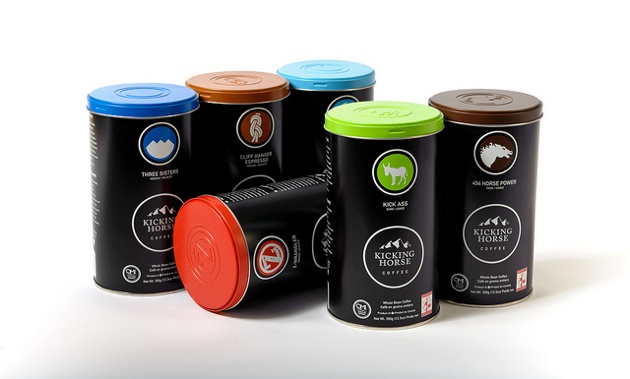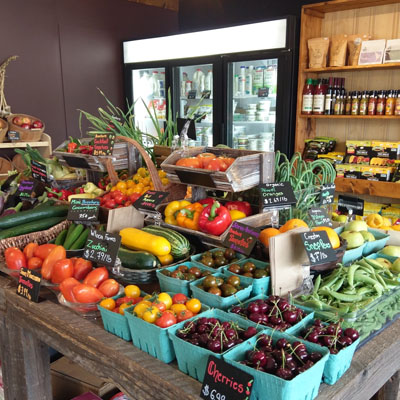What’s in a brand?
Story & Co. is responsible for numerous branding and re-branding efforts in the Kootenays
What do Tim Hortons, Westjet, McCain Foods, Jean Coutu Group, Shoppers Drug Mart, Bombardier, Saputo, TD Bank and Rona all have in common? They are the top 10 Canadian brands Canucks identify with, according to Canadian Business magazine. It may seem obvious how a brand like Tim’s scores so high. However, according to the survey conducted by the Reputation Institute, it’s Tim Hortons’ community involvement that wins the day. Initiatives like Timbits hockey sponsorships and children’s foundation and camps are the key to the restaurant’s brand awareness. Tim’s forges a bond stronger than a mere cup of coffee.
So what about building a strong brand in the Kootenays? Tucked away in a brightly lit office on Kimberley’s downtown platzl is Story & Co., a company responsible for numerous branding and re-branding efforts by businesses and municipalities throughout the region. Here is a question and answer session with Matt Thompson, creative force behind Story & Co.
What is branding and why is it so important?
A brand is a story, and a story is a brand. It's who you are, what you do, what you've done and how you do things. It's also what people say behind your back. It's your reputation. It's the products or services offered, but most importantly, it's the experience you provide. Disney's CEO Michael Eisner succinctly describes a brand as "the product of a thousand small gestures."
It's also critical to note that a brand is not a logo, a website, a brochure or an ad. A logo, website, brochure and ad are all brand tools, used to help share a story. Other tools include guidelines and processes for businesses, organizations and communities to follow to ensure consistent experiences.
A good brand or story is immensely valuable. It provides differentiation from competition. It shows intentionalism, demonstrating that an entity cares about how it is perceived, thereby inspiring consumer/client confidence and trust. It adds value to both logical and emotional decision making. A brand suggests professionalism or sophistication through consistency and helps to eliminate redundancy, both in process and communication or marketing actions.
What is your approach to developing a strong brand?
Our approach to developing a brand involves hundreds of internal steps. But boiled down, we follow a process much the same as great doctors, plumbers and architects. First we sit down, shut up and listen. We ask insightful questions that allow us determine what the existing brand and story is today, and what tomorrow's aspirations and opportunities are. We then provide recommendations on how to tell the story best and develop the tools and processes necessary for the story to be shared.
What success story can you share?
A great story close to home is Kicking Horse Coffee, Canada's no. 1 organic, fair trade coffee. Their story kicks ass, and it's great to help tell it best. Their brand has huge Canadian market resonance and loyalty, and is a significant differentiator in the marketplace.
Our work with Shuswap Tourism won the Economic Development Association of Canada's Best Brand Identity and Application award, as well as Best Advertising Campaign for budgets under $600,000. Their story has assisted in helping to transition a regional reputation of houseboat parties to a four-season destination that's beautiful, casual and down-to-earth.
What are some strong brand identities you like?
We're cautious with the word like, as its implicit subjectivity can destroy brands in development. We're quite keen, however, on brands that 'work.' The majority of our brand work involves complex community stories, so we appreciate stories refined with simplicity and consistency. The brand 100% Pure New Zealand has excelled at place branding for a nearly a decade. Travel Oregon also does an exceptional job of story development.
Volkswagen does a tremendous job of maintaining a complex brand hierarchy, with sub-brands for economical models to luxury rides, and yet retain a brand foundation that's simple, consistent and clever. Their loyalty is high and their community is deep.
Others include the Vancouver Foundation, because they work hard to be accessible and approachable. I♥NY, because it's iconic and timeless. Hendrick's Gin, because it's consistently curious and ridiculous. MEC, because they understand experience and story. Iceland, because they know how to make cold cool.
How do you keep a brand strong and vibrant?
Keeping a brand strong and vibrant requires a combination of four key elements: simplicity, consistency, time and strategy.
Simplicity
Simplicity requires an uncanny expertise to distill complex story into a simple, versatile narrative. Simple stories are more easily heard, remembered, retold, and ultimately acted on.
Consistency
Once it's simple, it must be told consistently, the same way, again and again. A brand message is competing with thousands of other messages every day. To cut through the clutter, tell the same story again and again. Again and again. About the time you get bored with it, the rest of the world may just be beginning to notice.
Time
A big yellow M (McDonald's, I'm Lovin' it), or a glorified checkmark (Nike, Just Do It) mean absolutely nothing at first. It's only consistent usage, over time, that make their message simple and resonant.
Strategy
Strategy means knowing where to go and how to get there. Most brands fail because they don't understand their own story and where it needs to go. Their communication reflects their lack of vision.
Final tip: listen up!
Never stop listening and asking questions. You'll never know how your brand is doing unless you find out what they're saying behind your back.
If Tim Horton’s ever slips out of no. 1, they too may be knocking on the doors of the Kootenays’ own Story & Co., purveyor of fine brands.








Comments